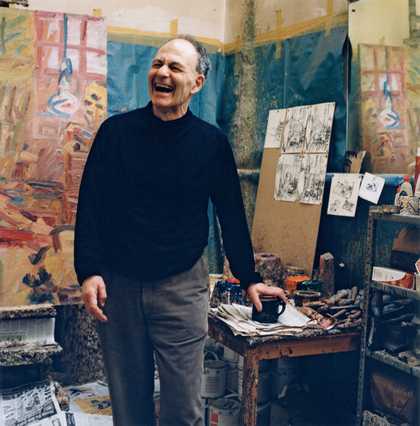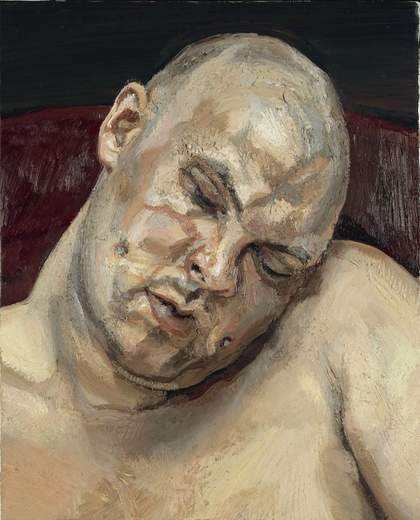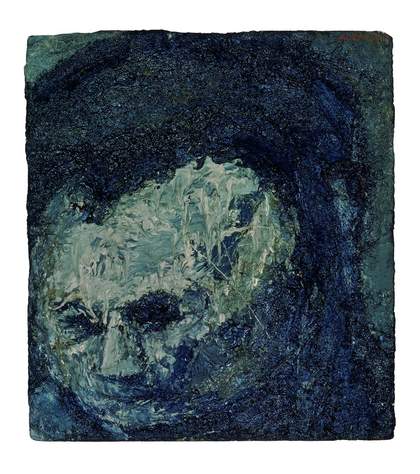
Frank Auerbach
Head of Leon Kossoff 1954
Private collection © Frank Auerbach, courtesy Marlborough Fine Art Photo: Prudence Cuming Associates Ltd
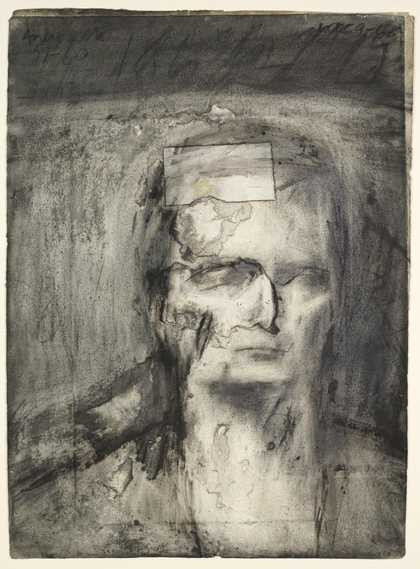
Frank Auerbach
Head of E.O.W. (1959–60)
Tate
Frank Auerbach was born in 1931. Since the late 1950s he has worked in the same north London studio. Leon Kossoff, an artist with whom Auerbach has such a strong link, passed the tenancy on to him, having himself taken the studio from another artist of that generation, Gustav Metzger. All three were taught, well, in Auerbach’s opinion, by David Bomberg. Auerbach’s technique is well described, largely through a number of interviews crafted and recorded by sitters and writers. He sketches, he draws, he paints on board and on canvas, in oil, as well as to a lesser extent, acrylic. He takes a long time and key to the process is scraping back. After each session he scrapes off the paint and begins again, regardless of the medium.
Testament to this activity are a number of photographs of the artist in his studio; Auerbach is surrounded by paint scrapings, which build up around his easel, like guano. His drawings do not escape this process of redaction either; their patchwork of support, with built up layers of papers, charcoal and chalk, potent evidence of his working practice.
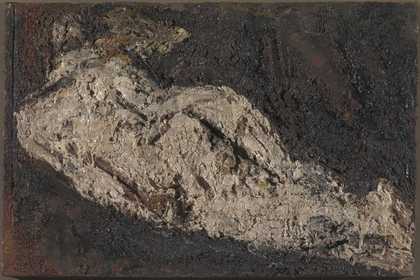
Frank Auerbach
E.O.W. Nude (1953–4)
Tate
Auerbach’s surfaces change over time, as does his palette. The wrinkled, thick, earlier oil on canvas, E.O.W. Nude dating from 1959, has some scraping back evident around the figure, but is largely left built up. This is in part why it wrinkles, an aesthetic feature the artist does not mind. The palette is subdued earth pigments, whites and blacks, as he could not afford colour at the time. ‘In common with most painters,’ he says, ‘I use all sorts of instruments (even sometimes hands) to apply the paint.’ His mark making develops over time; with brushes, palette knives, putty scrapers and sometimes paint squeezed directly from the tube.

Frank Auerbach
To the Studios (1990–1)
Tate
His oil on canvas, To the Studios 1981 has a tear, stabilised and repaired by the artist. It occurred in ‘the course of his long struggle with the painting’ whilst scraping down with a broader looking implement. Its palette is more colourful as Auerbach was well into a stage of his career where he could afford colours. Another work titled To the Studios 1990—1 was ‘repainted…from top to bottom hundreds of times, scraping down again and again.’ In the mid-nineties, not long after this painting was acquired, Tate conservators asked if he could describe his working practice. He could not, he said:
Painting is not manufactured. Each picture has its own history. The only constants are the fact that it always takes a long time, sometimes a very long time…
Auerbach is still working on a daily basis in the same studio in north London.

